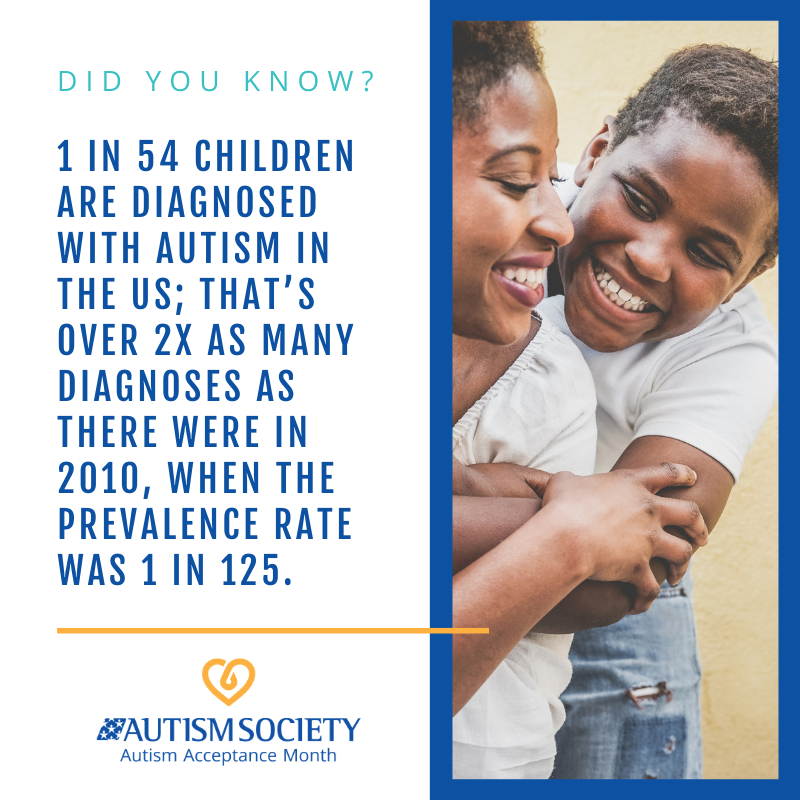April 1st marks the beginning of Autism Acceptance Month. This year brings a shift from the commonly used phrase “Autism Awareness Month” to “Autism Acceptance Month.” in an effort to build a more inclusive society. The month is dedicated to promoting autism awareness, inclusion, and ensuring those on the spectrum have the opportunity to achieve the highest possible quality of life.
Autism covers a spectrum of developmental disorders that can cause varying levels of social, communication, and behavioral challenges, per the Centers for Disease Control (CDC). People with autism often learn, think, and problem-solve differently. Autism Spectrum Disorder (ASD) now covers several conditions that used to be separate diagnoses, including autistic disorder, pervasive developmental disorder not otherwise specified, and Asperger Syndrome.
Who has autism? The CDC estimates 1 in 54 children has been identified with ASD in the US. It’s reported in all racial, ethnic, and socioeconomic groups. It is, however, four times more likely in boys. Studies done in Asia, Europe, and North America estimate that between 1-2% of the population has ASD.

The first signs of ASD usually appear by age two. Symptoms can vary from mild to severe, with a wide spectrum of functionality from low functioning to high functioning. A child or adult with ASD may exhibit a variety of symptoms including:
- Failing to respond to his/ her name
- Resists cuddling and holding
- Prefers to play alone
- Poor eye contact
- Delayed Speech
- Repetitive movements
- Dependent on routines and rituals
- Doesn’t engage in imitative or make-believe play
Currently, there is no known single cause of autism. Researchers have begun researching the role of genetics and the environment in those that develop ASD. Many with autism have additional medical conditions such as sleep disturbance, seizures, and gastrointestinal distress; addressing these conditions can improve attention, learning, and related behaviors. In addition, every child or adult with autism has unique strengths and challenges, so interventions should include behavioral treatments, medicines, or both. Some examples include:
- Applied Behavior Analysis (ABA)
- Occupational Therapy (OT)
- Relationship Development Intervention (RDI)
- Verbal Behavior
—
Resources:
https://www.cdc.gov/ncbddd/autism/facts.html
https://www.cdc.gov/ncbddd/autism/data.html
https://www.mayoclinic.org/diseases-conditions/autism-spectrum-disorder/symptoms-causes/syc-20352928
https://www.autismspeaks.org/treatments-autism
Photos by vejaa on iStock and Autism Society





